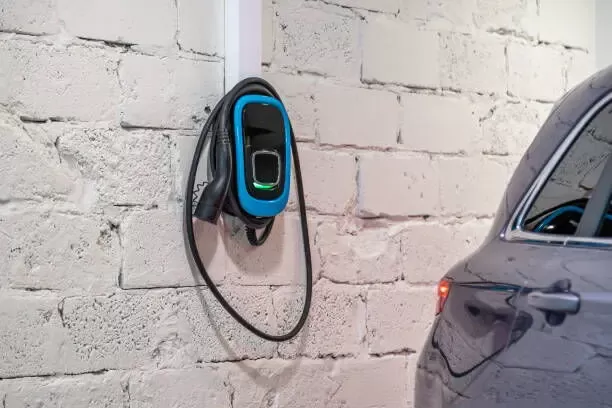Notifications

7 minutes, 40 seconds
-17 Views 0 Comments 0 Likes 0 Reviews

As a professional EV charger manufacturer in China, Topper Company delivers dependable electric vehicle charging stations and comprehensive charging solutions.
As electric vehicles (EVs) gain widespread adoption, the demand for safe and reliable charging infrastructure is more critical than ever. A persistent concern among EV owners is the risk of overheating during charging. Excessive heat can compromise not only the charger's performance but also the safety of your home or facility.
Understanding the causes and consequences of overheating is essential for safe operation and extending the life of your equipment. This article explores why EV chargers overheat, the risks involved, and practical steps to prevent overheating—especially in home environments.
Overheating can result from multiple factors, ranging from environmental conditions to electrical faults. Identifying these helps homeowners take preventive action:
Over time, electrical connections inside or outside the charger may loosen or corrode, increasing resistance and generating heat. These “hot spots” can escalate into serious hazards if unchecked.
Prevention: Perform regular inspections to ensure plugs are tight, terminals clean, and wires secured. Even minor corrosion should be addressed promptly.
Drawing more power than your charger or circuit is rated for causes excess heat buildup. This often happens if the charger shares a circuit with other heavy loads or is installed on an undersized circuit.
Prevention: Use a dedicated circuit sized to your charger’s specifications. Consult a licensed electrician if you’re unsure.
Chargers exposed to direct sunlight or high ambient temperatures struggle to dissipate heat effectively, increasing thermal stress.
Prevention: Install chargers in shaded, well-ventilated locations. Consider weatherproof enclosures that allow airflow while protecting against rain and debris.
Many modern chargers include heat sinks or fans to manage temperature. Obstruction by dust, leaves, or debris can cause these systems to fail, leading to heat accumulation.
Prevention: Regularly clean vents and fans, especially for outdoor or dusty installations.
Aging or defective parts such as capacitors, resistors, or switches can malfunction and produce excessive heat due to unbalanced power flows.
Prevention: Choose high-quality, certified chargers and schedule periodic professional inspections.
Smart chargers rely on software to manage charging cycles and safety. Bugs or outdated firmware can cause chargers to overwork, such as failing to stop charging after completion.
Prevention: Keep firmware updated and select brands that support over-the-air (OTA) updates and software maintenance.
Incorrect wiring, poor grounding, or non-compliant electrical setups can lead to overheating and pose fire risks.
Prevention: Always use certified electricians and strictly follow manufacturer installation guidelines.
Accumulated dirt, insulation wear, and unnoticed cable damage can raise operating temperatures and hazards.
Prevention: Regularly inspect for physical damage and test safety components like ground fault circuit interrupters (GFCI).
Overheated wiring or components can ignite, especially in residential settings with flammable materials nearby. Electrical faults are a leading cause of home fires globally.
For unattended or outdoor chargers, advanced fire suppression systems like Stat-X aerosol technology can extinguish fires early, minimizing damage and downtime.
Repeated overheating degrades internal components, reducing performance, slowing charging speeds, and shortening device lifespan.
Heat from the charger can impact the EV’s battery and onboard charging systems. This may lead to costly repairs or dangerous thermal runaway incidents.
Avoid sharing your charger’s circuit with other heavy loads. A dedicated, properly rated circuit ensures consistent power and reduces heat risk.
Ensure adequate airflow around the charger. Avoid confined, unventilated spaces or areas exposed to direct sunlight.
For outdoor setups, choose protective enclosures that still allow heat dissipation.
Opt for chargers from reputable brands with strict quality controls and certifications such as CE, TUV, FCC, and CCC.
Example: Topper EV chargers feature premium materials, IP65-rated waterproof and dustproof protection, and robust environmental resistance.
Smart chargers with temperature sensors can detect abnormal heat and shut down automatically within fractions of a second, preventing damage or fire.
Topper’s all-link temperature control system is an example of such advanced safety technology.
Schedule regular checks for loose plugs, damaged cables, dust buildup, and wear.
Test safety components like GFCI breakers to confirm ongoing protection.
Consider chargers compliant with protocols such as OCPP 1.6/2.0.1, which enable smart load balancing and grid coordination. These features help avoid peak load stress and improve safety.
Topper chargers support remote monitoring, OTA firmware updates, and customizable user controls through mobile apps or backend platforms.
EV chargers are indispensable for modern electric mobility but pose risks if improperly installed or maintained. Overheating, though common, is preventable with awareness and good practices.
By understanding the causes—from poor ventilation and loose wiring to subpar components and software glitches—you can protect your equipment and property effectively.
Choosing certified, high-performance chargers with built-in temperature management and robust protection, like those from Topper, offers peace of mind and long-term reliability. Remember, prevention is always easier and more cost-effective than repair.
Whether you are new to EV ownership or looking to optimize your setup, following these best practices ensures safe, efficient, and worry-free charging.Know more about Google SEO Directory
China EV Chargers EV Charger Manufacturer EV Charging Solutions

